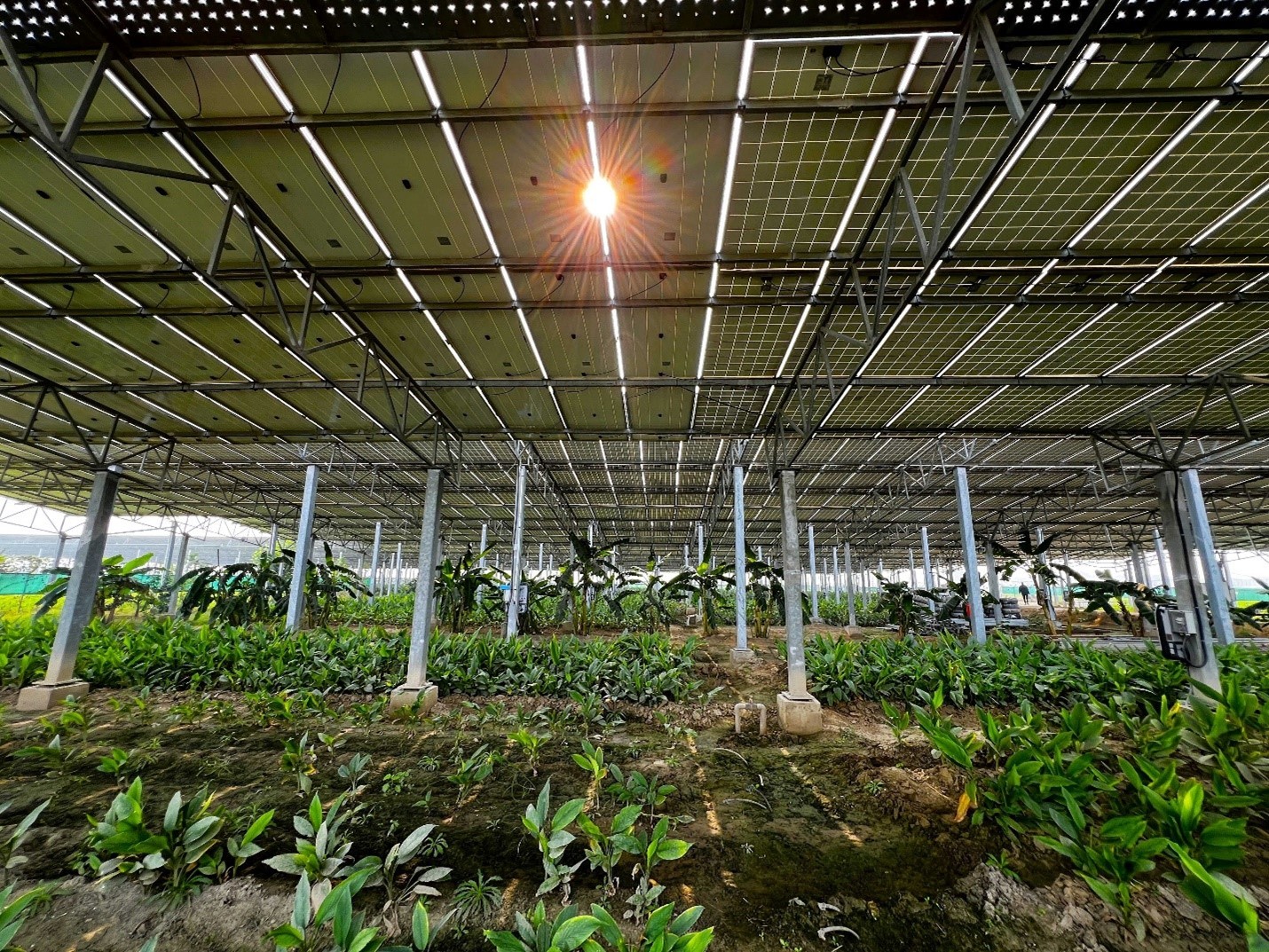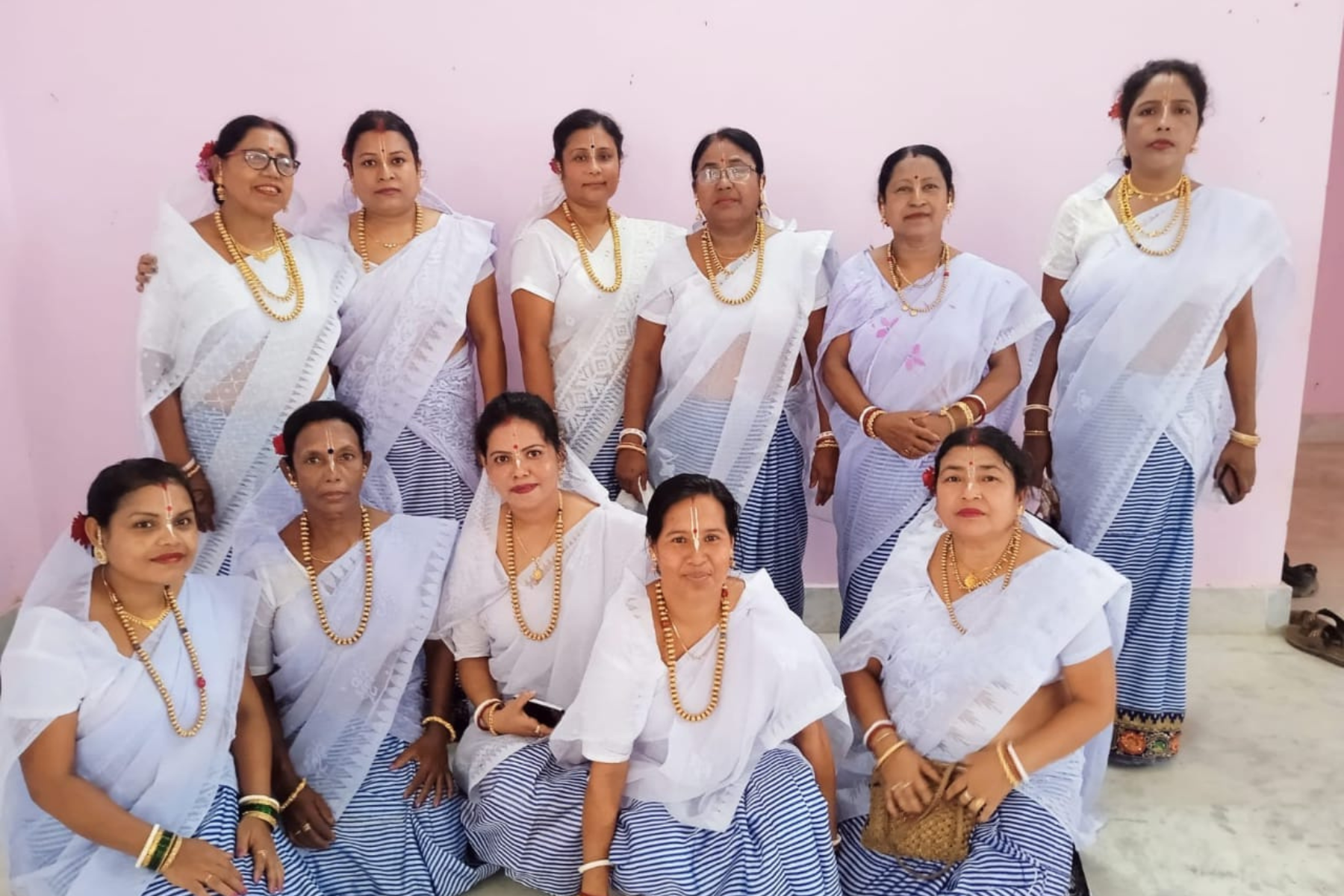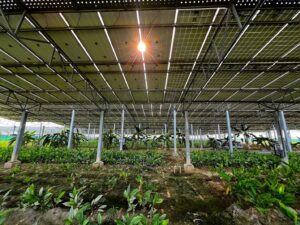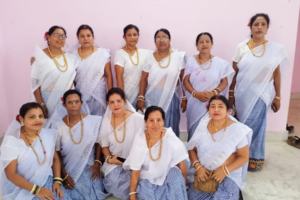Haridwar, Uttarakhand
Amidst fears that the Mahakumbh, which began in Haridwar on April 1, might become a “super spreader” of the COVID-19 virus, the Uttarakhand government is trying to put into place measures to minimise risks.
The Kumbh that sees the world’s largest gathering of devotees normally lasts for four months (January to April), but due to the pandemic, it has been restricted to the month of April and will conclude on April 27. There is expected to be a surge in the number of devotees converging on the pilgrimage city on April 12, 14 and 28, that are considered to be the holiest for a dip in the Ganges. On Mahashivratri on March 11 last month, over three million devotees took a dip in the holy Ganges river in Haridwar.
“Though the duration of the Kumbh has been shortened, efforts are on to make the event a grand and divine one,” Acharya Mahamandaleshwar Swami Awdheshanand Giri Maharaj of Sri Panchdashnam Juna Akhara, told Gaon Connection. He also appealed to the public to cooperate and follow the COVID-19 guidelines.
Massive security arrangements have been made for the safe conduct of the Mahakumbh, Ashok Kumar, the director general of police, Uttarakhand, told Gaon Connection.
According to him, 20,000 jawans are deployed at the Kumbh from the Border Security Force, Indo Tibetan Border Police and the police. Besides this, squads from the Provincial Armed Constabulary, commandos of the National Security Guards, three bomb disposal squads, as well as anti-terror squads from the Central Reserve Police Forces have been detailed for duty.
हर की पैड़ी, हरिद्वार में माँ गंगा की पूजा-अर्चना कर महाकुंभ में सुरक्षा व्यवस्था में तैनात सभी पुलिसकर्मियों और पैरामिलिट्री फोर्स के जवानों को कर्तव्यनिष्ठा की शपथ दिलाई।#Mahakumbh2021 #SurakshitKumbh @ANI @PIBDehradun @IPS_Association @aajtak pic.twitter.com/bdnfw0Mrb4
— Ashok Kumar IPS (@AshokKumar_IPS) March 28, 2021
Sanjay Gunjyal, inspector general of police at Kumbh, said there were more than 100 drones and 1,500 CCTV cameras monitoring the crowds at all times.
Health workers along with the paramilitary forces and the police personnel have been deployed at the seven entry points into Haridwar to keep Kumbh safe and free from COVID-19, Gunjyal told Gaon Connection. He added that rapid tests of citizens coming from other states were being carried out too.
As per the COVID-19 Report released by the Uttarakhand’s health department, more than 100,000 people have tested positive in the state so far with the active caseload being 3,017. Of this 550 new cases were registered on April 4.
In Haridwar alone where the Kumbh is underway, 173 new cases of the contagion had been registered in the last 24 hours taking the city’s tally to 837 active cases. Haridwar has the second highest caseload after the state capital, Dehradun.
The significance of Kumbh
According to Hindu mythology, there was a 12-day battle between gods and demons for the Amrit Kalash (a pot of nectar) that promised immortality to anyone who partook of it. In the tussle a few drops fell into the holy rivers at Prayagraj, Haridwar, Nasik and Ujjain.”
The 12 days represent 12 years on earth and therefore the Kumbh Mela came to be celebrated once every 12 years in these four holy cities. Devotees believe that by taking a dip in the holy waters, they will be blessed.
Elaborating on the unique aspect of the ongoing Kumbh Mela, which is being held after 11 years instead of 12, Swami Virendranand Maharaj said, “It is because of the planetary movement this year. That is, Jupiter will not be upon Aquarius zodiac. So, this year, Kumbh is being held in the 11th year itself and it is happening after a long period of 83 years. The last time this happened was in the years 1760, 1885 and 1938,” he explained.
Kinnar Akhada at the Kumbh
Interestingly, it is for the first time that the Kinnar Akhara (transgender) is participating at the Haridwar Kumbh amidst disagreements between the several akharas in Haridwar. The akhara was formed in 2015 with Lakshmi Narayan Tripathi being appointed the Acharya Mahamandaleshwar. Commenting on the akhara’s participation in the Kumbh this year, the Acharya said, “No one knows gender discrimination better than the transgenders who constantly suffer the taunts of society. The community is still neglected by the society.” The Kinnar Akhara was set up in 2015, and Lakshmi Narayan Tripathi was appointed its Acharya Mahamandaleshwar in 2016.
Uttarakhand High Court orders corona tests
While the Kumbh is underway in Haridwar, a bench comprising Chief Justice RS Chauhan and Justice Alok Kumar Verma of the Uttarakhand High Court issued guidelines to the state government to conduct 50,000 COVID-19 tests daily within the Kumbh area. The bench also instructed the state government to upload the relevant report regularly on its website.
In view of the rapidly growing number of COVID-19 cases, the high court also made it mandatory for all those visiting the Haridwar Kumbh to furnish a COVID- negative report (no older than 72 hours), or a vaccination certificate.
When the Gaon Connection team arrived at Haridwar railway station, the RT PCR reports of all the passengers were being checked and the rapid test was being carried out by the healthcare workers outside the railway station.
According to a home guard positioned outside the station, more than 10,000 people were arriving at Haridwar by train daily. The home guard on condition of anonymity added that more than half of them were furnishing their RT PCR reports, while about four to five thousand were being tested outside the station. So far only about four or five people were testing positive every day, on an average.
हरिद्वार में चल रहे कुंभ मेला में देखिए अलग-अलग क्षेत्रों की संस्कृतियों की झलक
— GaonConnection (@GaonConnection) April 5, 2021
वीडियो: @deepakrawat1298 #KumbhMela2021 @ias_rawat @TIRATHSRAWAT @UTDBofficial #Uttarakhand pic.twitter.com/kFq1imHKP1



















